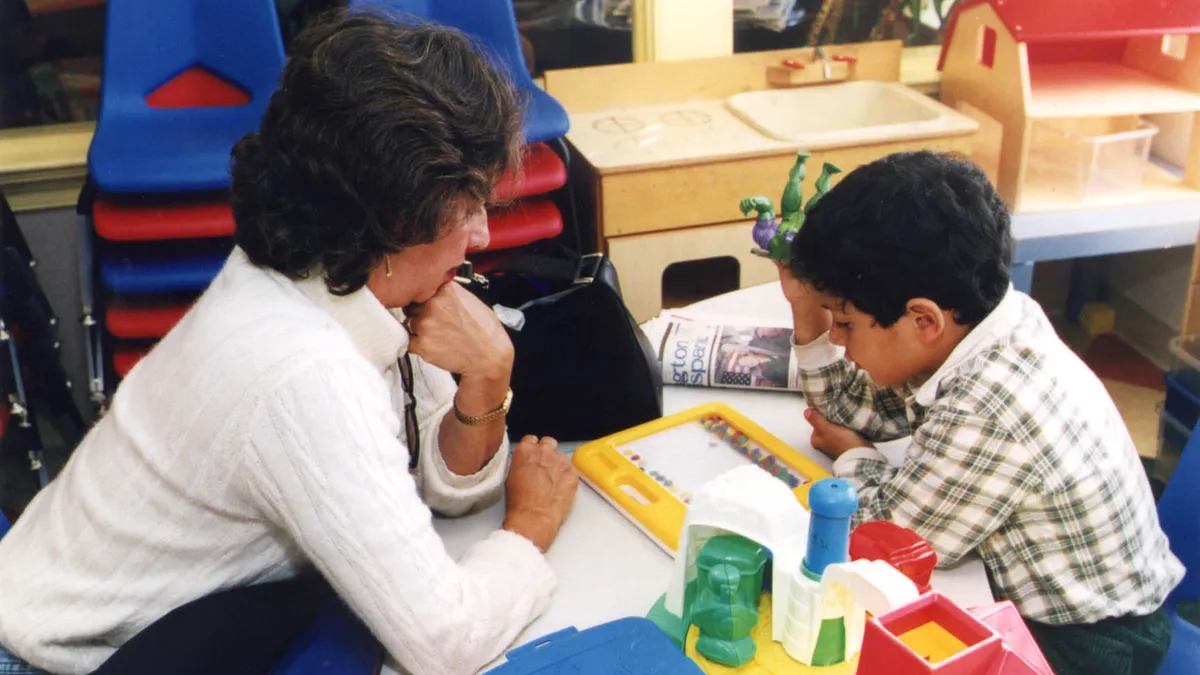Dive Brief:
- Students with special needs are still less likely to attend charter schools than traditional district schools, but the difference has declined over the past 10 years, according to a new National Center for Special Education in Charter Schools’ analysis of the U.S. Department of Education’s Civil Rights Data Collection.
- Almost 11% of charter school students (10.79%) have been identified with disabilities, compared to 12.84% of students in traditional schools. In 2008, 7.7% of charter school students were identified with disabilities, compared to 11.3% of students in traditional schools.
- Suspension rates for all students are higher in charter schools than traditional schools, with the suspension rate for students with disabilities just slightly higher than in traditional schools — 11.85% compared to 11.32%. The report notes, however, when charter schools operate as their own districts, instead of being part of a district, they are more likely to suspend students with and without disabilities. Suspension rates among charter schools also vary across states.
Dive Insight:
Charter schools have long been criticized for not being as welcoming to students with disabilities or behavior problems as they are students without special needs. Lauren Morando Rhim, the center’s co-founder and executive director, said in a press release that while there are signs of improvement, “they can do better.”
“More parents of students with disabilities than ever are choosing charter schools, which is a positive sign,” she said, “and we believe charter schools can drive effective change so that all schools are able to provide families with the quality education, services, and supports they deserve and need.”
The report shows that in charters, 83.5% of students with disabilities spend the bulk of their day, at least 80%, in general classrooms — compared to 65.5% of special needs students in traditional schools. But the authors note it’s unclear whether charter schools have more students who can be successful in general classrooms or if they are struggling to provide programs for students with disabilities.
Morando Rhim notes that when charter schools consider the needs of students with disabilities “from the very beginning,” they are more likely to offer appropriate services.
The report also raises questions about the growth of charter schools that specialize in serving students with disabilities, saying this trend “may translate into an increase in the number of segregated settings rather than a decrease as mandated by the broad goals” of the Individuals with Disabilities Education Act. The challenge for both sectors, the report says, is to support the “innovation and excellence” of the specialized charters while not allowing them to be “the default or only option for students with disabilities.”







 Dive Awards
Dive Awards







